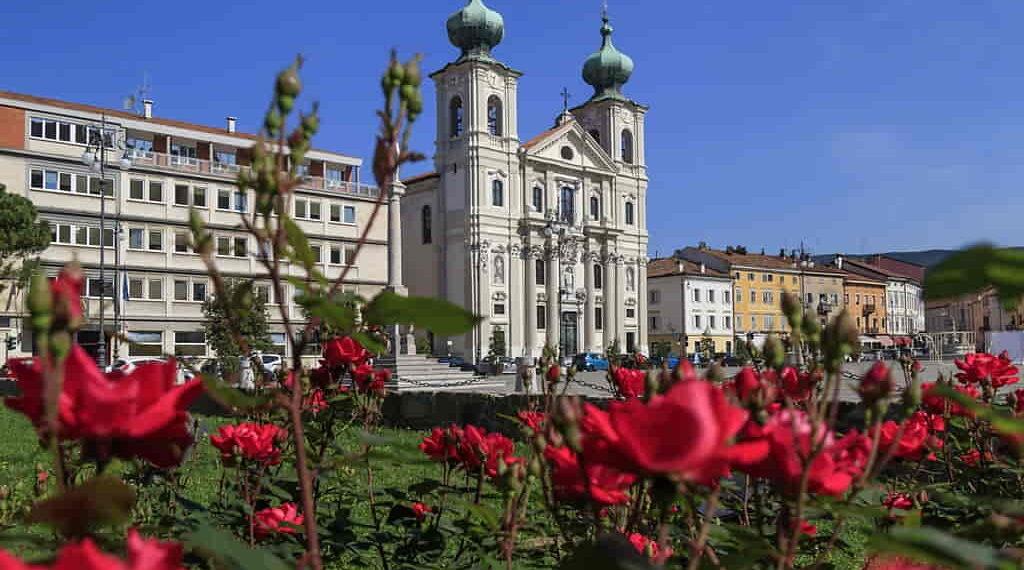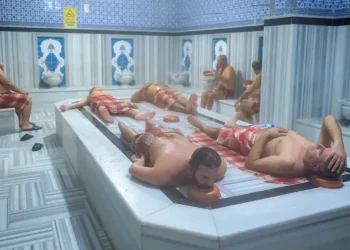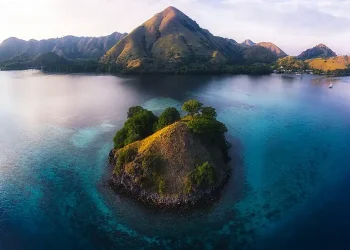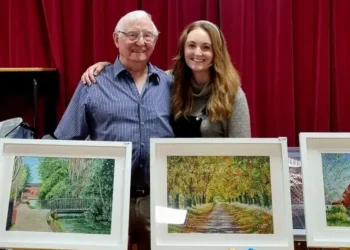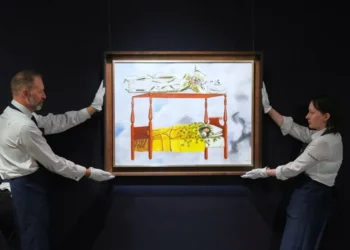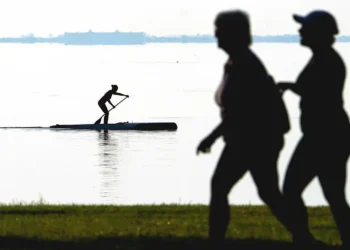Europe’s First Borderless Capital of Culture: Gorizia and Nova Gorica Unite in 2025
In 1947, the town of Gorizia was split between Italy and Slovenia, leaving its two parts divided for decades. But in 2025, the two cities will reunite as the first transnational European Capital of Culture, an unprecedented celebration of shared heritage and cross-border cooperation.
Standing in Nova Gorica, Slovenia, a modernist town with a population of 30,000, I’m just a few steps from the invisible border that separates it from Italy’s medieval Gorizia. I don’t need a passport to cross into the Italian side, but I do step into a new world.
Once, these towns were one. In 1947, after World War II, the Treaty of Paris drew new borders in Europe, and the town was divided along the Isonzo River. Gorizia was allocated to Italy, and the area on the opposite side became part of Yugoslavia, later evolving into Nova Gorica. From then on, they lived as two separate towns, split by borders and political systems.
But when Slovenia joined the European Union in 2004, the once-restrictive border became just a line on a map. The new openness sparked a cultural exchange that, by 2025, will culminate in their co-hosting of the European Capital of Culture under the banner GO!2025.
This award, which attracts millions of visitors each year, will see between 2 and 5 million tourists flocking to the region in 2025, a sharp increase from the usual 250,000 annual visitors. The towns, historically overlooked, are now preparing for an influx of travelers, drawing attention to their unique charm and history. To celebrate, a packed schedule of cultural events, from music and dance performances to art exhibits, will showcase the vibrant cultural fusion of these twin towns.
Two Towns, One Spirit
Despite sharing a history, Gorizia and Nova Gorica offer contrasting atmospheres. Gorizia, with its medieval cobblestone streets, lively cafes, and imposing castle, feels like a step back in time. The castle houses a museum filled with interactive exhibits that bring its rich history to life.
In stark contrast, Nova Gorica—designed in the Modernist style—bears the imprint of post-war Yugoslav ambition. Its concrete architecture and carefully planned streets tell the story of a town built to showcase the possibilities of a new political and cultural reality. While unassuming at first glance, Nova Gorica surprises with hidden gardens, crumbling palaces, and faded murals—reminders of the city’s turbulent past.
Though unglamorous at first, Nova Gorica’s understated beauty makes it a place worth exploring. And with the spotlight of the European Capital of Culture, it is poised to captivate millions of visitors, just as it did me.
A Transnational Capital of Culture
The European Capital of Culture designation is awarded by the EU to two towns each year, and 2025 will see Gorizia and Nova Gorica make history as the first transnational recipients. The joint bid, which promotes the idea of a “borderless” cultural exchange, is symbolic of Europe’s evolving understanding of borders and national identity. With two cultures and languages—Slovenian and Italian—interwoven in daily life, the towns are a living example of cross-border cooperation.
Administratively, Gorizia and Nova Gorica remain distinct, but in practice, the border feels more like a concept than a reality. People speak both languages, and locals freely cross back and forth. Some, like Tomaž Gržeta, a Slovenian music journalist, choose to live on one side and work on the other, a testament to the seamless integration of these two towns.
While there are no checkpoints to cross the border, one of the most iconic spots for tourists is Piazza Transalpina. Straddling both countries, this cultural hub allows visitors to stand in two places at once—half in Italy, half in Slovenia. As part of the GO!2025 program, the square has been transformed into a vibrant cultural space featuring an underground art gallery, amphitheater-style seating, and performance areas, all celebrating the shared heritage of these two towns.
A Rich and Complicated History
Gorizia and Nova Gorica’s borderless identity is rooted in a complex history. Over the centuries, the region passed through various political hands: the Habsburgs, Napoleon, Austria-Hungary, the Kingdom of Italy, Yugoslavia, and now Italy and Slovenia.
Local tour guide Evelin Bizjak offers a personal reflection of the region’s shifting borders: “My grandma was born in Austria-Hungary. My father was born in the Kingdom of Italy. I was born in Yugoslavia. If I had kids, they’d be born in Slovenia.” The fluidity of identity and the historical layers of this area are embodied in local landmarks, like the Slovenian Smuggling Museum and its Italian counterpart, the Lasciapassare Museum. These museums offer a glimpse into life along the border, showcasing the smuggling culture that arose when strict travel restrictions were imposed.
In the mid-20th century, when the border was drawn, families had just two months to decide whether they wanted to be Yugoslav or Italian. Those who chose to live under Yugoslavia’s rule helped build Nova Gorica from a cluster of houses into a planned town. While architect Edvard Ravnikar’s modernist vision shaped part of the town, much of it was built according to practical needs rather than aesthetic ideals, leaving Nova Gorica with a somewhat unfinished feel.
A Cultural Crossroads
My visit ends at Kostanjevica, a 16th-century Franciscan church overlooking both towns. The church, nearly destroyed in World War I, was lovingly restored and houses the tombs of French king Charles X and his family. It’s a striking reminder of the area’s rich cultural tapestry—where French royalty rests among Slovenian and Italian landmarks, and where centuries of history converge.
From Kostanjevica, I can see both Gorizia and Nova Gorica, situated between the Alps and the Adriatic Sea. This is where two cultures meet and thrive, where borders blur and coexistence thrives. As the first transnational European Capital of Culture, GO!2025 is an opportunity to explore and celebrate a truly unique European region—a place where history, culture, and the spirit of collaboration create something extraordinary.
This article was rewritten by JournosNews.com based on verified reporting from trusted sources. The content has been independently reviewed, fact-checked, and edited for accuracy, neutrality, tone, and global readability in accordance with Google News and AdSense standards.
All opinions, quotes, or statements from contributors, experts, or sourced organizations do not necessarily reflect the views of JournosNews.com. JournosNews.com maintains full editorial independence from any external funders, sponsors, or organizations.
Stay informed with JournosNews.com — your trusted source for verified global reporting and in-depth analysis. Follow us on Google News, BlueSky, and X for real-time updates.
